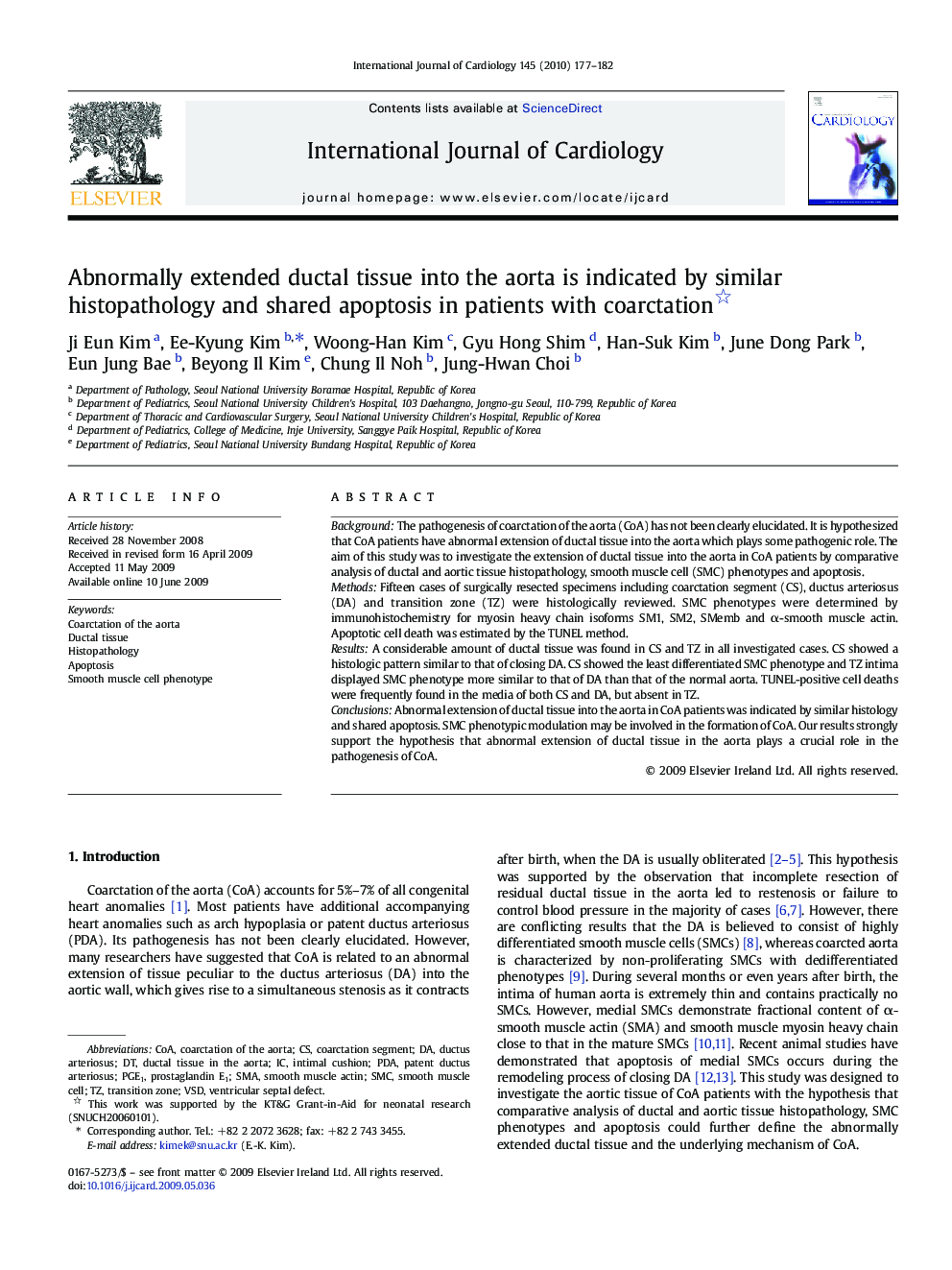| Article ID | Journal | Published Year | Pages | File Type |
|---|---|---|---|---|
| 2931778 | International Journal of Cardiology | 2010 | 6 Pages |
BackgroundThe pathogenesis of coarctation of the aorta (CoA) has not been clearly elucidated. It is hypothesized that CoA patients have abnormal extension of ductal tissue into the aorta which plays some pathogenic role. The aim of this study was to investigate the extension of ductal tissue into the aorta in CoA patients by comparative analysis of ductal and aortic tissue histopathology, smooth muscle cell (SMC) phenotypes and apoptosis.MethodsFifteen cases of surgically resected specimens including coarctation segment (CS), ductus arteriosus (DA) and transition zone (TZ) were histologically reviewed. SMC phenotypes were determined by immunohistochemistry for myosin heavy chain isoforms SM1, SM2, SMemb and α-smooth muscle actin. Apoptotic cell death was estimated by the TUNEL method.ResultsA considerable amount of ductal tissue was found in CS and TZ in all investigated cases. CS showed a histologic pattern similar to that of closing DA. CS showed the least differentiated SMC phenotype and TZ intima displayed SMC phenotype more similar to that of DA than that of the normal aorta. TUNEL-positive cell deaths were frequently found in the media of both CS and DA, but absent in TZ.ConclusionsAbnormal extension of ductal tissue into the aorta in CoA patients was indicated by similar histology and shared apoptosis. SMC phenotypic modulation may be involved in the formation of CoA. Our results strongly support the hypothesis that abnormal extension of ductal tissue in the aorta plays a crucial role in the pathogenesis of CoA.
